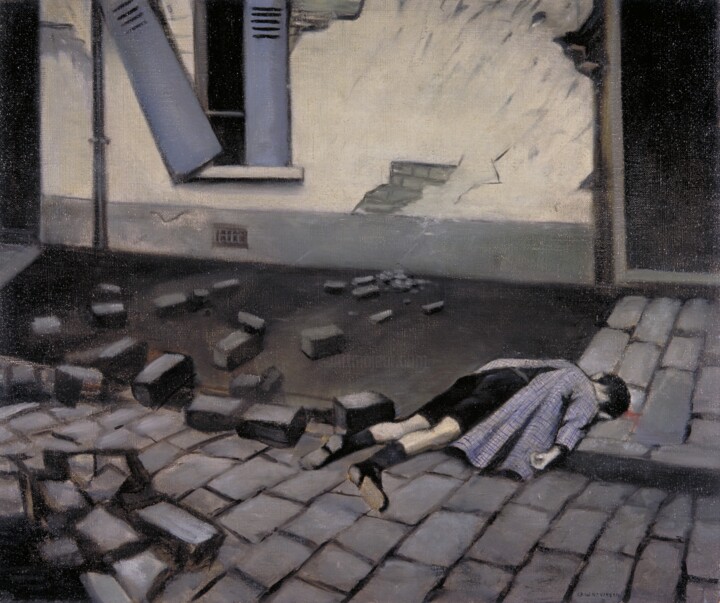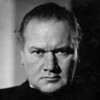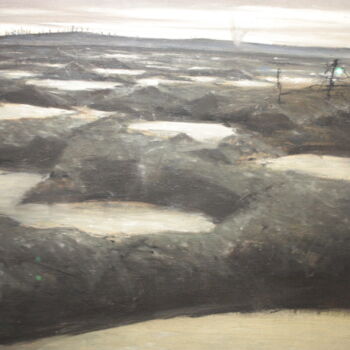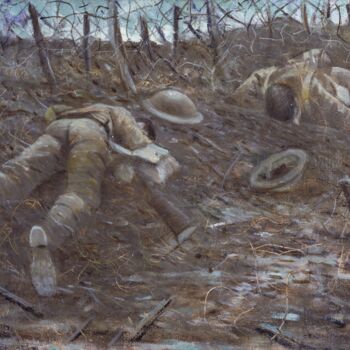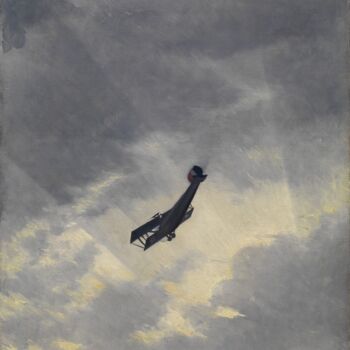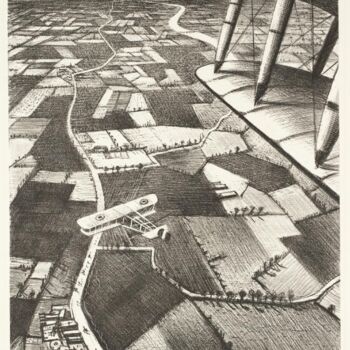A Taube (1916) Painting by Christopher Nevinson
Seller Artmajeur Editions
Seller Artmajeur Editions
-
Original Artwork
Painting,
Oil
- Dimensions Dimensions are available on request
- Framing This artwork is not framed
- Categories Expressionism War
Dans cette composition, Nevinson dépeint la réalité déchirante des victimes civiles de la guerre. Le corps inerte de l'enfant est au centre de l'attention, rappelant les conséquences dévastatrices des attaques aériennes sur les populations innocentes. Les pavés brisés témoignent de la violence et de la destruction causées par les bombardements.
Les couleurs utilisées dans cette peinture sont sombres et ternes, reflétant la tristesse et le désespoir de la scène. Nevinson parvient à capturer l'horreur de la guerre et à susciter une profonde émotion chez le spectateur.
Related themes
Christopher Richard Wynne Nevinson was a British artist born August 13, 1889 in London and died October 7, 1946 in Paris. He is best known for his war paintings and depictions of the Futurist movement.
Nevinson was born into a family of artists and studied at the Slade School of Fine Art in London, where he was influenced by artists such as Paul Gauguin and Vincent van Gogh. During the First World War, he enlisted as an ambulance driver and served on the French front, which had a profound effect on his art. His wartime experiences inspired some of his most famous works, including 'The Machine Gun' and 'The Silk Road', which depict the brutality and horror of war.
After the war, Nevinson turned to the Futurist movement and incorporated elements of speed and dynamism into his paintings. His futuristic works, such as 'Save Progress', were critically acclaimed and helped popularize this art movement in the UK.
Over the years, Nevinson experimented with different artistic styles, moving from Futurism to Expressionism and Cubism. His works have been exhibited in numerous art galleries and he has become an important figure in the British art scene.
However, despite his initial success, Nevinson went through periods of artistic and financial decline. He continued to paint throughout his life, but he was somewhat forgotten by the general public. It was only after his death that his work was rediscovered and reassessed by art historians.
Today, Christopher Nevinson's paintings are housed in museums around the world, and his legacy as a major artist of the early 20th century lives on. His commitment to the realistic depiction of the horrors of war and his exploration of the Futurist movement have earned him an important place in the history of modern art.
-
Nationality:
UNITED KINGDOM

- Date of birth : 1889
- Artistic domains: Represented by a Gallery,
- Groups: Contemporary British Artists Artists presented by a gallery

